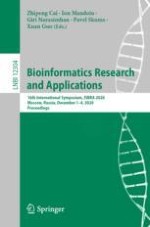2020 | OriginalPaper | Buchkapitel
Isoform-Disease Association Prediction by Data Fusion
verfasst von : Qiuyue Huang, Jun Wang, Xiangliang Zhang, Guoxian Yu
Erschienen in: Bioinformatics Research and Applications
Aktivieren Sie unsere intelligente Suche, um passende Fachinhalte oder Patente zu finden.
Wählen Sie Textabschnitte aus um mit Künstlicher Intelligenz passenden Patente zu finden. powered by
Markieren Sie Textabschnitte, um KI-gestützt weitere passende Inhalte zu finden. powered by
